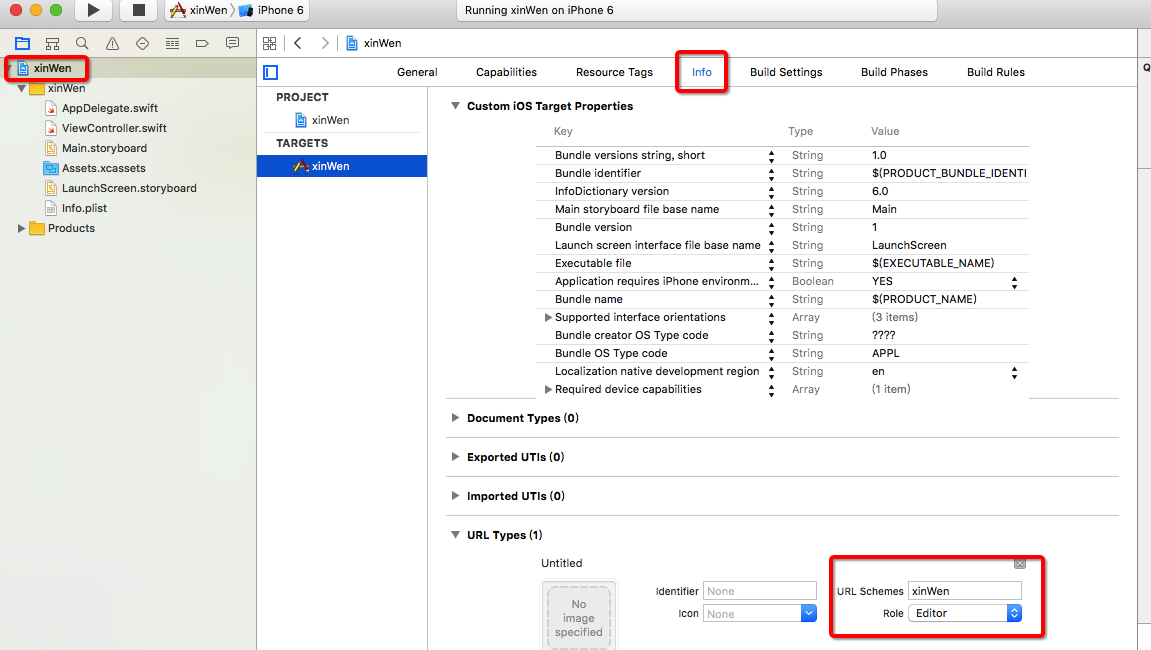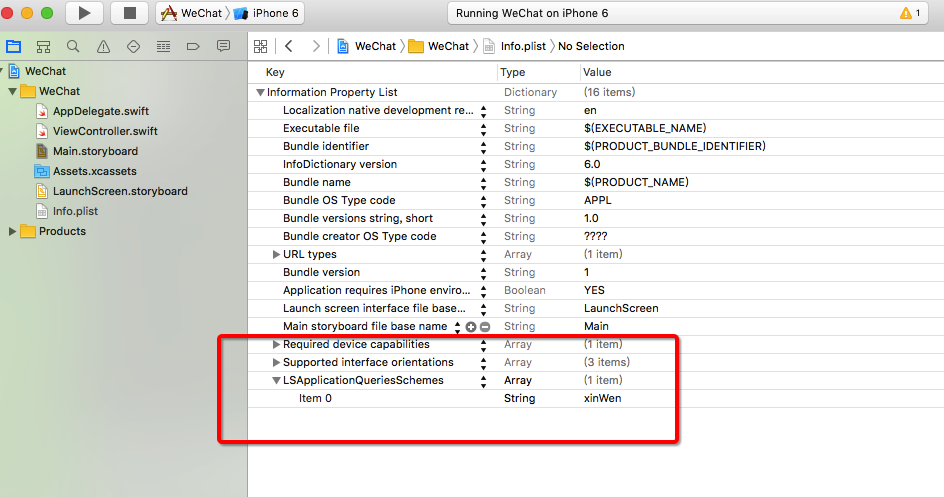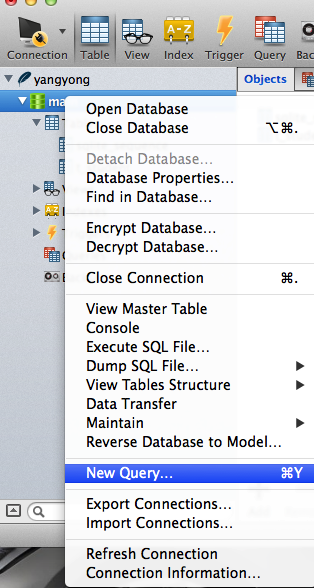iOS應用程序之間的幾種跳轉情況詳解
編輯:IOS開發綜合
前言
在iOS開發的過程中,我們經常會遇到比如需要從一個應用程序A跳轉到另一個應用程序B的場景。這就需要我們掌握iOS應用程序之間的相互跳轉知識。下面我們就常用到的幾種跳轉情況進行介紹。
一、跳轉到另一個程序的主界面
每個程序都該有一個對應的Scheme,以確定對應的url

一個程序要跳轉到(打開)另外一個程序,需要將另外一個程序的Scheme添加到自己的應用程序白名單中(在info.plist中配置:LSApplicationQueriesSchemes,類型為數組,在數組中添加相應的Scheme)->ios9.0開始

跳轉代碼
extension ViewController {
@IBAction func jumpToXinWen(sender: AnyObject) {
openURL("xinWen://")
}
private func openURL (urlString : String) {
let url = NSURL(string: urlString)!
if UIApplication.sharedApplication().canOpenURL(url) {
UIApplication.sharedApplication().openURL(url)
}
}
}
二、跳轉到另一個程序的指定界面
完成上面程序間跳轉的相應設置
實現跳轉代碼(與跳轉到主頁相比,url多了參數,?前面參數是目標程序想要跳轉界面的segu標簽,?後面是當前程序的scheme)
// MARK: - 跳轉微信朋友圈
@IBAction func jumpToWeChatTimeLine(sender: AnyObject) {
openURL("WeChat://TimeLine?xinWen")
}
// MARK: - 跳轉微信好友
@IBAction func jumpToWeChatSession(sender: AnyObject) {
openURL("WeChat://Session?xinWen")
}
private func openURL (urlString : String) {
let url = NSURL(string: urlString)!
if UIApplication.sharedApplication().canOpenURL(url) {
UIApplication.sharedApplication().openURL(url)
}
在目標程序AppDelegate中監聽用來跳轉的相應信息,根據這些信息讓目標程序自己實現頁面切換
extension AppDelegate {
//監聽當前程序被其他程序通過什麼樣的Url打開
func application(application: UIApplication, openURL url: NSURL, sourceApplication: String?, annotation: AnyObject) -> Bool {
//根據url跳轉對應頁面
//1.url轉化成字符串
let urlString = url.absoluteString
//2.獲取首頁控制器
let rootVc = application.keyWindow?.rootViewController
let mainVc = rootVc?.childViewControllers[0] as! ViewController
//將url傳遞給mianVc
mainVc.urlString = urlString
//3.根據字符串內容完成對應跳轉
if urlString.containsString("Session") {//跳轉好友
mainVc.performSegueWithIdentifier("Session", sender: nil)
}else if urlString.containsString("TimeLine") {//跳轉朋友圈
mainVc.performSegueWithIdentifier("TimeLine", sender: nil)
}
return true
}
}
三、如何從目標程序的非主頁界面回到當前(跳轉前)程序呢?
思路: 只要在目標程序的非主頁界面知道跳轉前的程序的URL即可直接跳轉,所以,這裡的關鍵是如何將跳轉前的程序的URL傳遞到目標程序的非主頁界面.
在目標控制器APPDelegate中能獲取到用來跳轉的URl信息的方法中將url傳遞給mianVC(事先定義好接收數據的屬性),如上面代碼所示.
在mianVc 中將url傳遞給需要切換的控制器(事先定義好接收數據的屬性)
//切換界面,需要來到該方法.能夠拿到切換前後的控制器
override func prepareForSegue(segue: UIStoryboardSegue, sender: AnyObject?) {
if segue.identifier == "Session" {
let sessionVc = segue.destinationViewController as! SessionViewController
//傳遞數據
sessionVc.urlString = urlString
}
}
}
在目標控制器中根據url信息,獲取跳轉前控制器的scheme,從而得到跳轉回去的url.
class SessionViewController: UIViewController {
//接收數據
var urlString = ""
override func viewDidLoad() {
super.viewDidLoad()
navigationItem.leftBarButtonItem = UIBarButtonItem(title: "退回跳前應用", style: .Plain, target: self, action: #selector(backToStartApp))
}
}
extension SessionViewController {
func backToStartApp() {
//分割Url,獲取跳轉前的程序的scheme
let scheme = urlString.componentsSeparatedByString("?")[1]
print(scheme)
//拼接字符串
let backString = "\(scheme)://"
//打開url
openURL(backString)
}
private func openURL (urlString : String) {
let url = NSURL(string: urlString)!
if UIApplication.sharedApplication().canOpenURL(url) {
UIApplication.sharedApplication().openURL(url)
}
}
}
總結
以上就是關於iOS應用程序之間跳轉的全部內容,希望能對各位iOS開發者們有所幫助,如果有疑問大家可以留言交流。
相關文章
+



